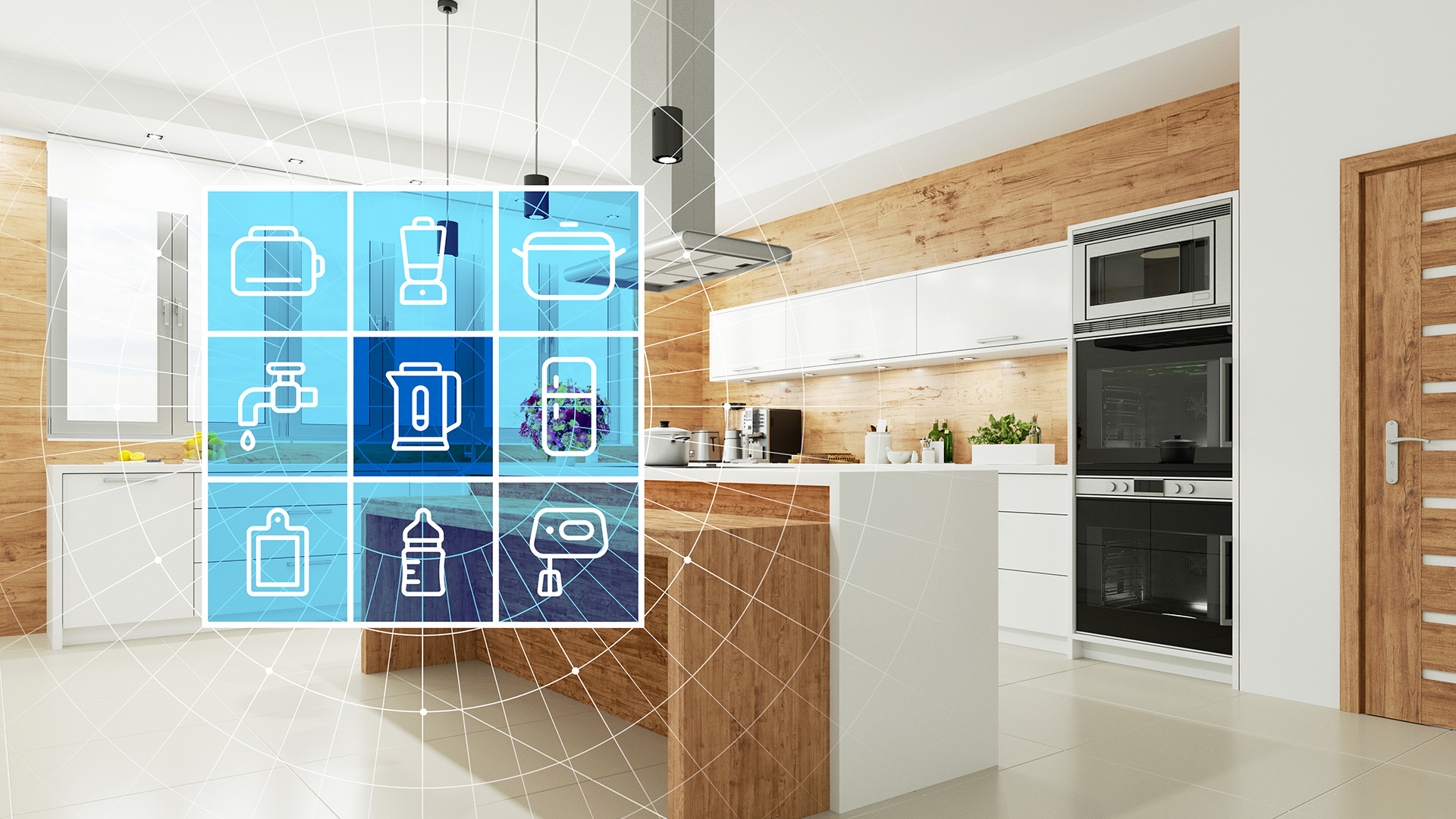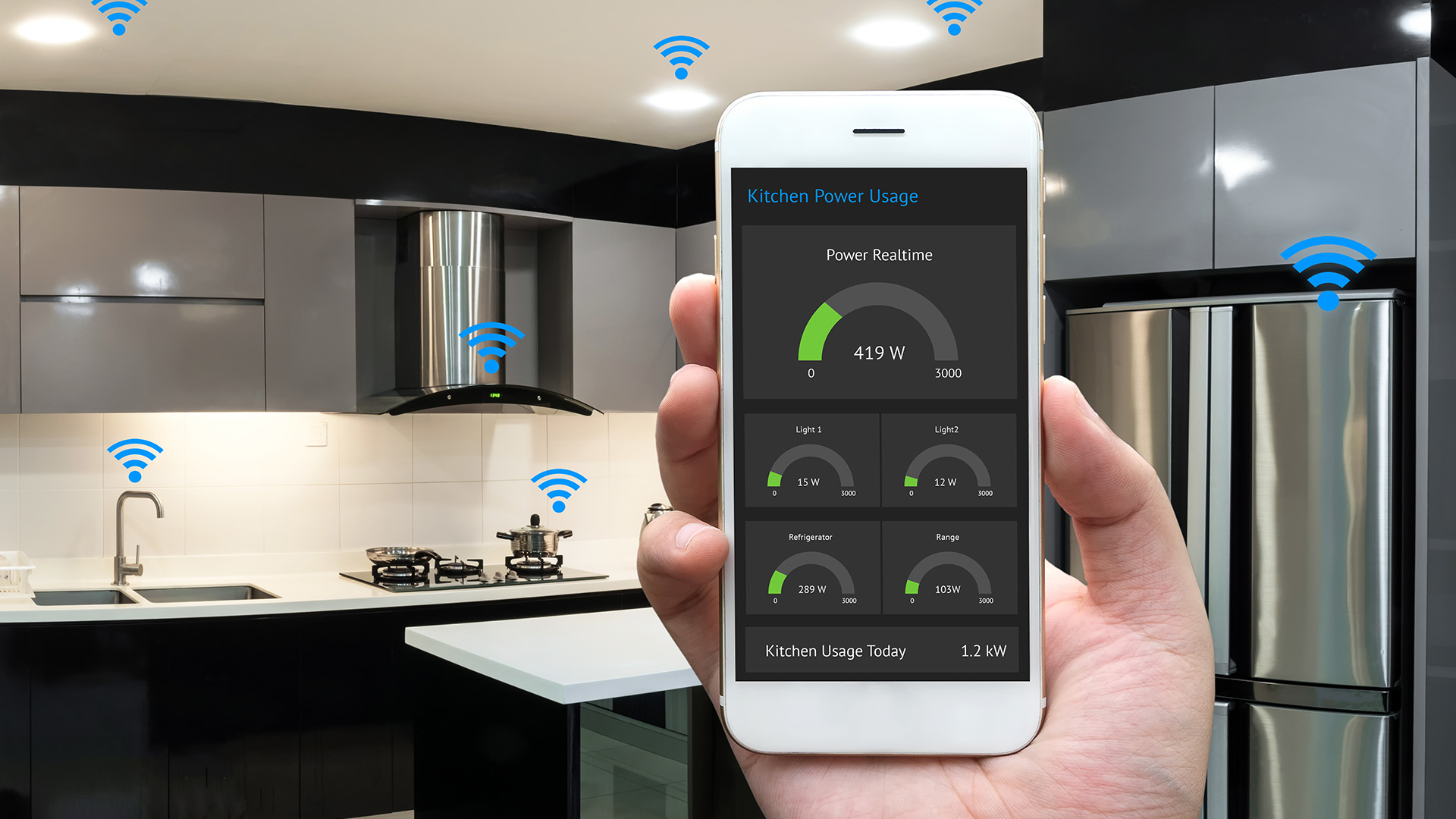
The Internet of Things (IoT) in Your Home
Wouldn’t it be amazing if our household and personal devices could help with the little things that go wrong in our days? Did you forget to lock the front door? Or did you accidentally delete your grocery list?
Imagine a future in which your home knows you’re not there, locks your doors, and sends you a message to let you know. Picture a fridge that knows you’re running low on milk and berries – while alerting you to a package of spoiled fish.
We are close to a world in which our smart devices are ready to really and truly help make life better. How are they going to achieve this? By being connected to the IoT or Internet of Things.
If you don’t work in the tech sector, Internet of Things probably sounds odd, yet pretty self-explanatory. But the reality is so much more complex.
Development of the Internet of Things
This growing web of smart devices consists of any personal electronic product that collects, transmits, and receives data from an external network.
We devices that are safe, silent, effective, and easy on the environment. To achieve these goals, devices need to be constantly learning, and constantly evolving. That means those products need data. Trillions of pieces of information evaluated and acted upon. So, we need our products connected to the Internet of Things (IoT).
The idea of these products talking to each other within a global spatial computing network might seem like part of a distant future – or the plot of a sci-fi movie. In reality, the IoT is already coming to fruition. And it’s here to help.
Household Chores using the IoT
We recently read about VR-trained robots being used to assist with housework. This is an exciting moment in the development of domestic robots because our current products are clunky and clumsy in home settings. It’s hard to picture the robots of today accomplishing the attention to detail required to properly replace human hands.
Yet domestic robots are not a new dream. Mid-century pop culture introduced the concept of house cleaning robots as well as homes that cleaned themselves. And then the idea that tedious and monotonous chores could be removed from our lives (without an exorbitantly expensive team of service staff) took hold.
The VR training implemented by Toyota in the video above is effective in educating robots about varied home environments, making it possible to have a robot visit your home, but not live there. Like a robotic maid service, not in the way when out of use, not requiring expensive personal ownership.
From automated vacuums like Roombas to hands-free shower cleaners, we’ve increasingly been adding machines that do household chores for us. In the beginning, it might have been easy to dismiss these products as ineffective trendy things, but as this technology improves the chances that you’ll have fewer hands-on chores – done properly – in the future are increasing.
Domestic Smart Systems
Another element of indoor living that IoT devices can improve are the systems we’ve come to take for granted. Appliances, plumbing, lights, clocks, speakers, and more can all be learning how to better serve your needs by collecting and receiving data.
For example, baseboard heaters that know what the weather is like outside – as well as how often you’re home – can have the right temperature waiting for you at the end of the day without wasting power.
As urban density necessarily increases, having living and working spaces tuned into the warmth, light, and air quality we need will make life much more enjoyable.

Image Credit: Adobe Stock / zapp2photo
Some of what the IoT can potentially contain doesn’t exist yet. Ideas include smart walls that radiate (or remove) heat while projecting calming forest imagery and related sounds. When your wall knows that it’s winter and can warm you while mimicking a window, all at the heart of a large concrete tower, you can see how these smart devices could totally reinvent what it means to live in a city.
Green Buildings and the Internet of Things
The lack of wasted resources mentioned above isn’t just convenient, it’s downright critical to achieving our future energy goals. Because managing energy efficiency through human behaviour is just as flawed as it sounds. We need to take forgetful and/or absent-minded moments out of the equation and program our surroundings to use as little power as possible.
Look around your home at every opportunity for a device or process to save energy or use fewer resources. Have you wondered what it would take to make recycling easier? Every time you turn a container over in your hands trying to figure out which bin to put it in – or if you can recycle it at all – that’s a moment for a smart, IoT-enabled device to help you. Think of green bins that alert you to rotting food. (No more fruit flies indoors.) Or recycling bins that can sense incorrect contents. (No more strata fines or roadside pickups left behind.) These moments sound mundane, but they’re not.
Achieving energy efficient buildings and environmentally friendly everyday living is one of the most important pieces in the climate strategies we need going forward.
Security and Privacy in the IoT
One of the biggest concerns about using externally networked smart devices is our potential vulnerability. A home that could be hacked can be as unsettling as speakers listening to our conversations. Devices like Amazon Alexa and Google Home add convenience, but to some, come with a layer of unwelcome Big Brother-esque supervision.
The solutions to these concerns will definitely evolve over time. We currently have the power to tell speakers and security systems when we want them on, and/or listening, and when we don’t. It’s up to the humans designing and programing our IoT devices to decide what we’re willing to trade to live in the clean and comfortable homes of the future.
Stambol futurists do a lot of mental time travelling, so we’re always excited to talk shop about the world of the future. Ask us how our day-to-day lives are going to be affected by the IoT – and what the Internet of Things can do to boost your business in the process.
Feature Image Credit: Adobe Stock / Robert Kneschke


